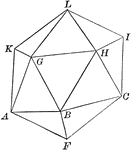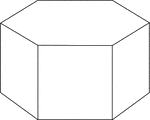
Decagonal Antiprism
Illustration of a decagonal antiprism. An antiprism is formed by having two parallel congruent bases…
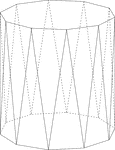
Decagonal Antiprism
Illustration of a decagonal antiprism. An antiprism is formed by having two parallel congruent bases…

Dodecagonal Antiprism
Illustration of a dodecagonal antiprism. An antiprism is formed by having two parallel congruent bases…
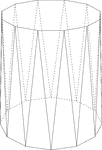
Dodecagonal Antiprism
Illustration of a dodecagonal antiprism. An antiprism is formed by having two parallel congruent bases…

Heptagonal/Septagonal Antiprism
Illustration of a heptagonal, or sometimes known as a septagonal antiprism. An antiprism is formed by…
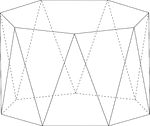
Heptagonal/Septagonal Antiprism
Illustration of a heptagonal, or sometimes known as a septagonal antiprism. An antiprism is formed by…
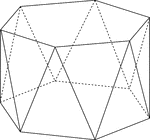
Hexagonal Antiprism
Illustration of a hexagonal antiprism. An antiprism is formed by having two parallel congruent bases…
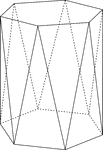
Hexagonal Antiprism
Illustration of a hexagonal antiprism. An antiprism is formed by having two parallel congruent bases…

Nonagonal Antiprism
Illustration of a nonagonal antiprism. An antiprism is formed by having two parallel congruent bases…

Nonagonal Antiprism
Illustration of a nonagonal antiprism. An antiprism is formed by having two parallel congruent bases…

Octagonal Antiprism
Illustration of an octagonal antiprism. An antiprism is formed by having two parallel congruent bases…
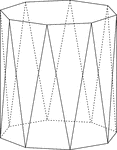
Octagonal Antiprism
Illustration of an octagonal antiprism. An antiprism is formed by having two parallel congruent bases…
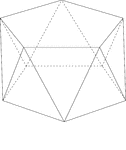
Pentagonal Antiprism
Illustration of a pentagonal antiprism. An antiprism is formed by having two parallel congruent bases…

Pentagonal Antiprism
Illustration of a pentagonal antiprism. An antiprism is formed by having two parallel congruent bases…
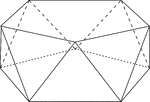
Pentagonal Antiprism
Illustration of a pentagonal antiprism. An antiprism is formed by having two parallel congruent bases…
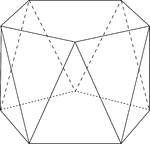
Pentagonal Antiprism
Illustration of a pentagonal antiprism. An antiprism is formed by having two parallel congruent bases…
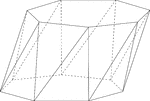
Skewed Heptagonal/Septagonal Antiprism
Illustration of a skewed (non-right) heptagonal, or sometimes known as a septagonal antiprism. An antiprism…
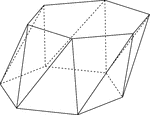
Skewed Hexagonal Antiprism
Illustration of a skewed (non-right) hexagonal antiprism. An antiprism is formed by having two parallel…

Skewed Nonagonal Antiprism
Illustration of a skewed (non-right) nonagonal antiprism. An antiprism is formed by having two parallel…

Skewed Octagonal Antiprism
Illustration of a skewed (non-right) octagonal antiprism. An antiprism is formed by having two parallel…

Skewed Pentagonal Antiprism
Illustration of a skewed (non-right) pentagonal antiprism. An antiprism is formed by having two parallel…
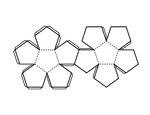
Pattern for Dodecahedron
Pattern that can be cut out and folded to construct a regular dodecahedron. Fold on the dotted lines,…

Regular Dodecahedron
Illustration of a regular dodecahedron. A regular dodecahedron is a polyhedron with twelve equal pentagonal…
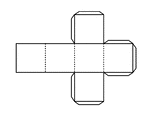
Pattern for Hexahedron
Pattern that can be cut out and folded to construct a regular hexahedron. Fold on the dotted lines,…

Part of an Icosahedron
Illustration of the bottom part of an icosahedron. The base consists of a regular pyramid, upon which…
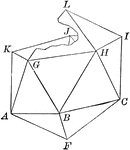
Partial Construction of an Icosahedron
Illustration of the steps to a construction of an icosahedron. The base consists of a regular pyramid,…
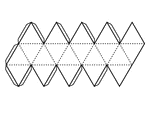
Pattern for Icosahedron
Pattern that can be cut out and folded to construct a regular icosahedron. Fold on the dotted lines,…

Pattern for Octahedron
Pattern that can be cut out and folded to construct a regular octahedron. Fold on the dotted lines,…
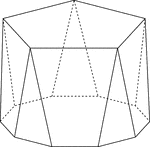
Polyhedron With Pentagon Bases
Illustration of a pentagonal polyhedron that is formed by having two parallel congruent pentagonal bases…

Polyhedron With Pentagon Bases
Illustration of a pentagonal polyhedron that is formed by having two parallel congruent pentagonal bases…
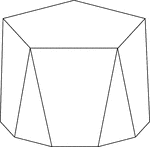
Polyhedron With Pentagon Bases
Illustration of a pentagonal polyhedron that is formed by having two parallel congruent pentagonal bases…

Regular Polyhedrons
Illustration of regular polyhedrons: tetrahedron, hexahedron, octahedron, dodecahedron, icosahedron.

Similar Polyhedrons
Two similar polyhedrons may be decomposed into the same number of tetrahedrons similar, each to each,…

Two Similar Polyhedrons
Diagram used to prove the theorem: "Two similar polyhedrons may be decomposed into the same number of…
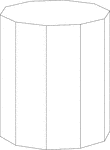
Decagonal Prism
Illustration of a right decagonal prism with regular decagons for bases and rectangular faces.

Decagonal Prism Resting On Its Side
Illustration of a right decagonal prism with regular decagons for bases and rectangular faces. The prism…
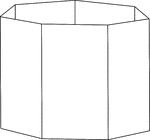
Heptagonal/Septagonal Prism
Illustration of a hollow right heptagonal/septagonal prism with regular heptagons/septagons for bases…
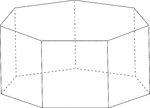
Heptagonal/Septagonal Prism
Illustration of a regular right heptagonal/septagonal prism with regular heptagons/septagons for bases…

Heptagonal/Septagonal Prism
Illustration of a right heptagonal/septagonal prism with regular heptagons/septagons for bases and rectangular…
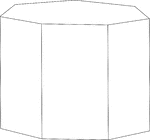
Heptagonal/Septagonal Prism
Illustration of a right heptagonal/septagonal prism with regular heptagons/septagons for bases and rectangular…

Hexagonal Prism
Illustration of a right hexagonal prism with a height less than the length of the edge of the hexagon.

Hexagonal Prism
Illustration of a right hexagonal prism with a height greater than the length of the edge of the hexagon.
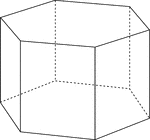
Hexagonal Prism
Illustration of a right hexagonal prism with hexagons for bases and square faces. The hidden edges are…

Hexagonal Prism
Illustration of a right hexagonal prism with hexagons for bases and rectangular faces. The height of…
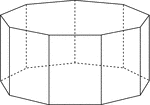
Nonagonal Prism
Illustration of a right nonagonal prism with regular nonagons for bases and rectangular faces. The hidden…
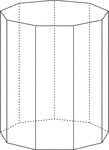
Nonagonal Prism
Illustration of a right nonagonal prism with regular nonagons for bases and rectangular faces. The height…
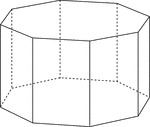
Octagonal Prism
Illustration of a right octagonal prism with regular octagons for bases and rectangular faces. The hidden…
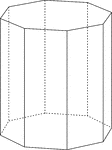
Octagonal Prism
Illustration of a right octagonal prism with regular octagons for bases and rectangular faces. The height…
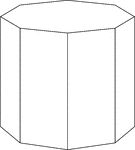
Octagonal Prism
Illustration of a right octagonal prism with octagons for bases and rectangular faces. The height of…

Octagonal Prism Resting On Side
Illustration of a right octagonal prism, with octagons for bases and rectangular faces, that is resting…

Pentagonal Prism
Illustration of a right pentagonal prism with regular pentagons for bases and rectangular faces. The…
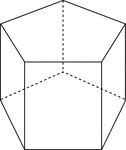
Pentagonal Prism
Illustration of a right pentagonal prism with regular pentagons for bases and rectangular faces. The…
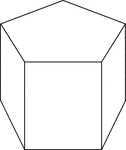
Pentagonal Prism
Illustration of a right pentagonal prism with regular pentagons for bases and rectangular faces. The…

Pentagonal Prism
Illustration of a right pentagonal prism with regular pentagons for bases and rectangular faces. The…

2 Octagonal Prisms
Illustration of 2 right octagonal prisms with congruent bases, but different heights. The height of…
